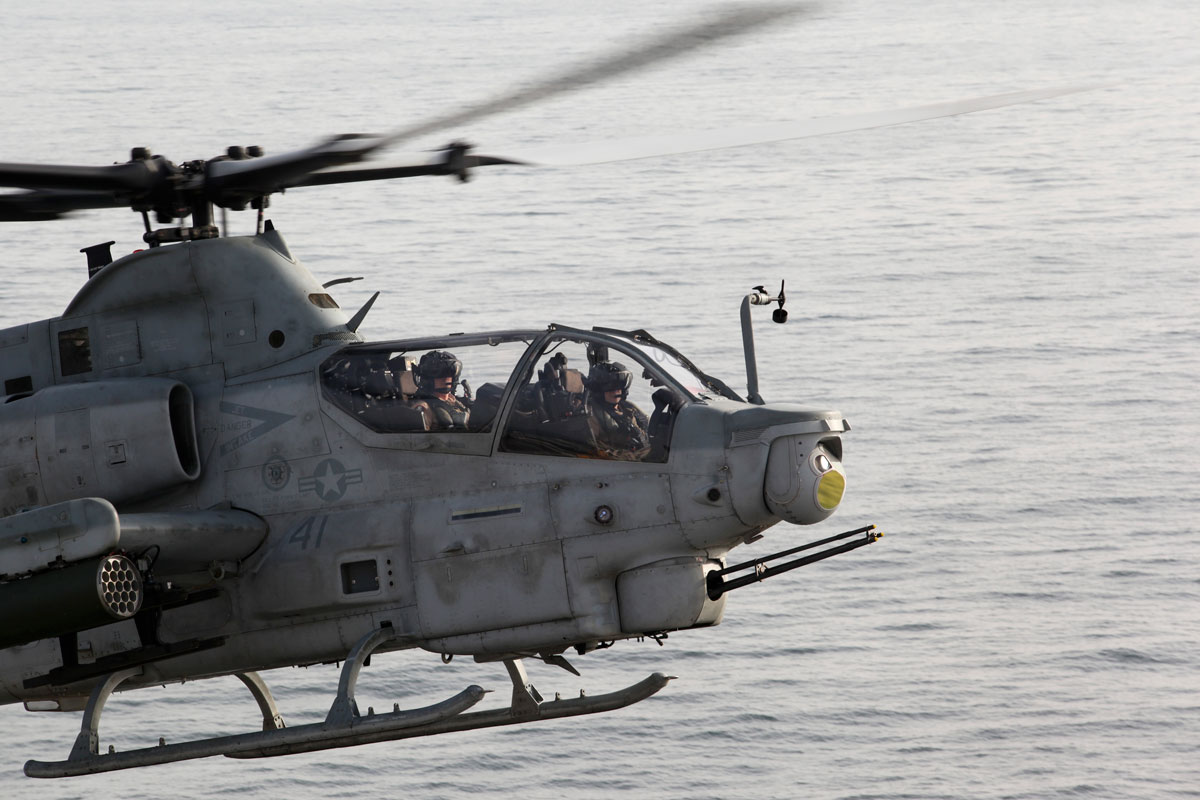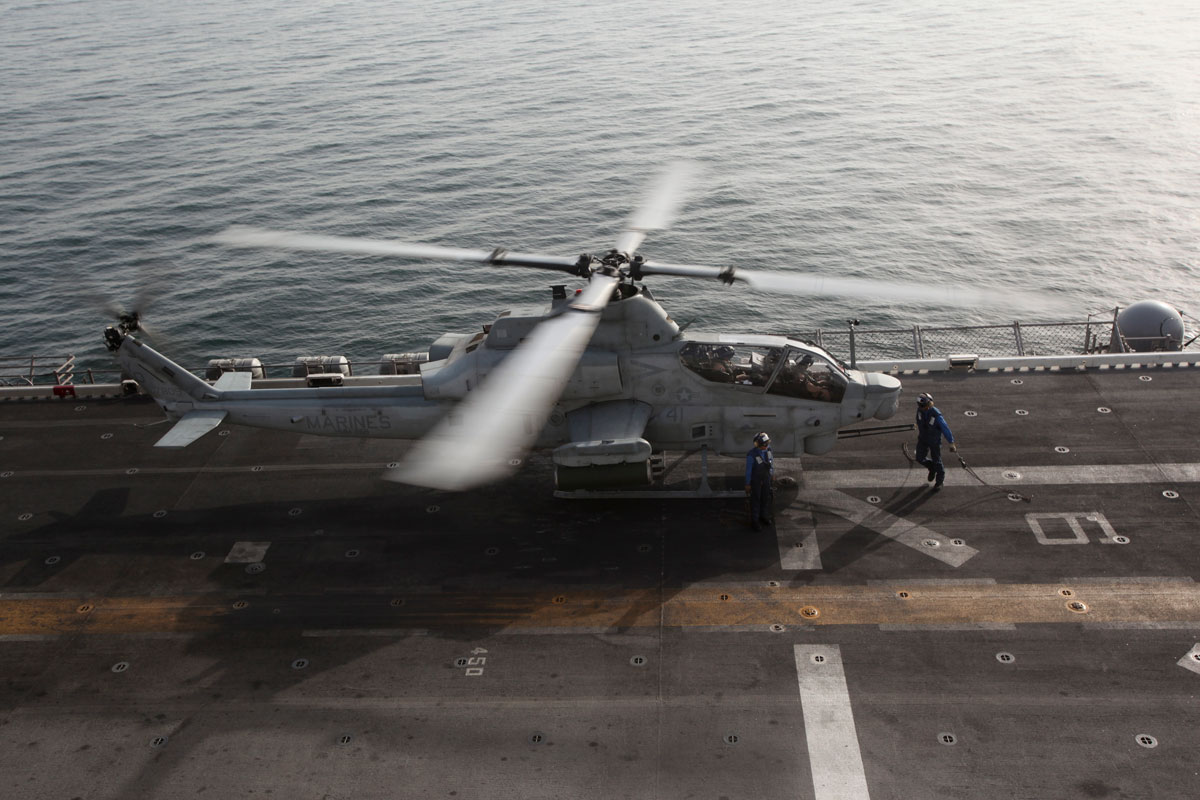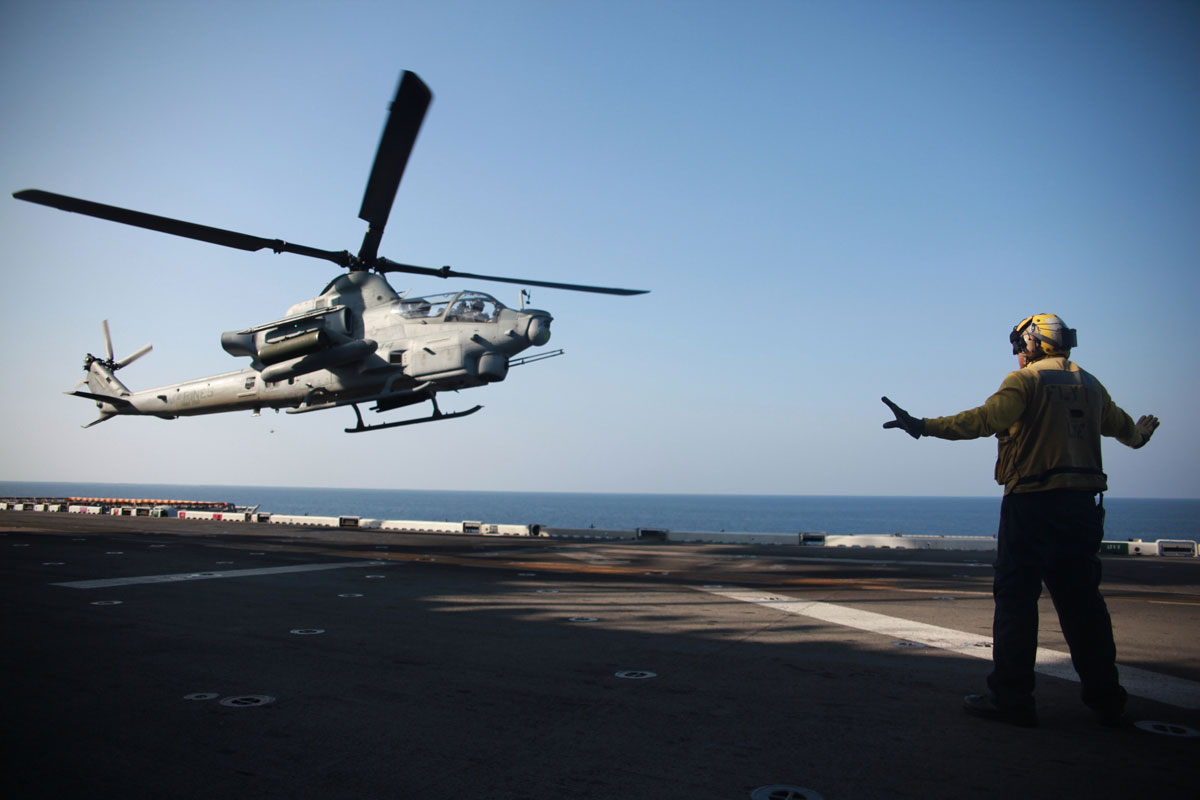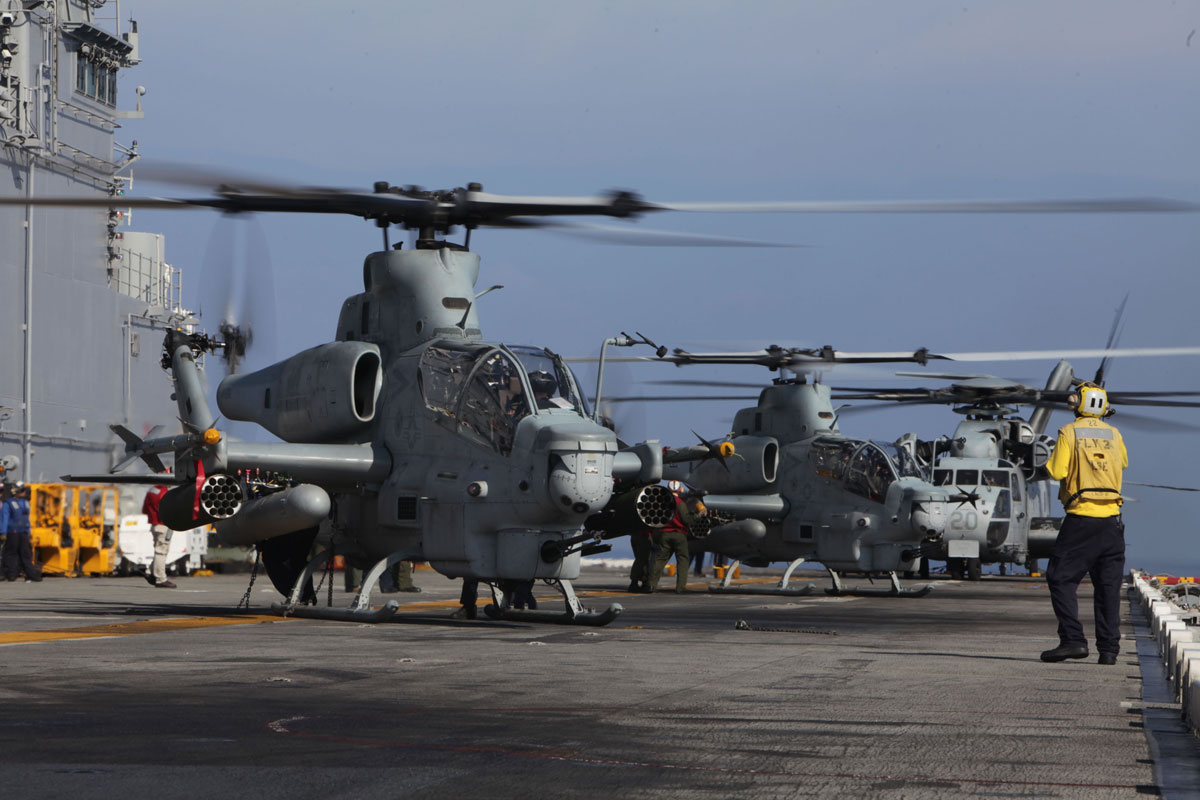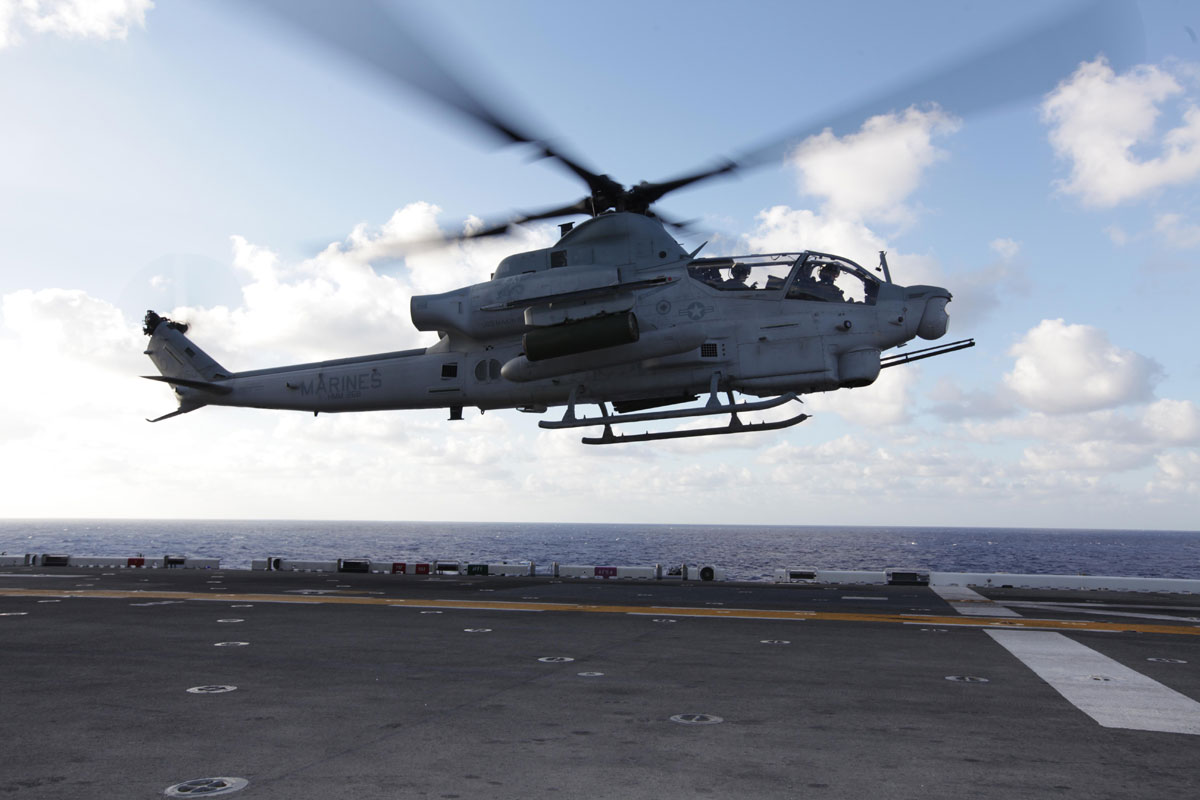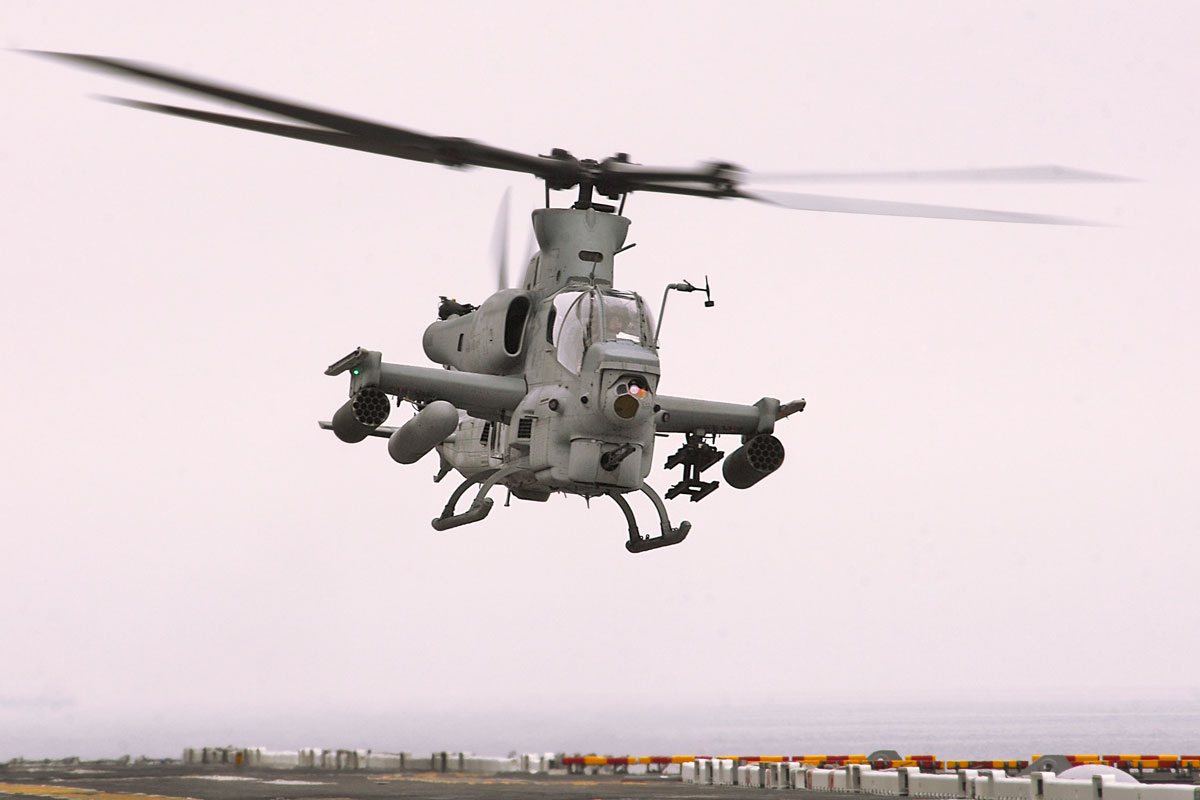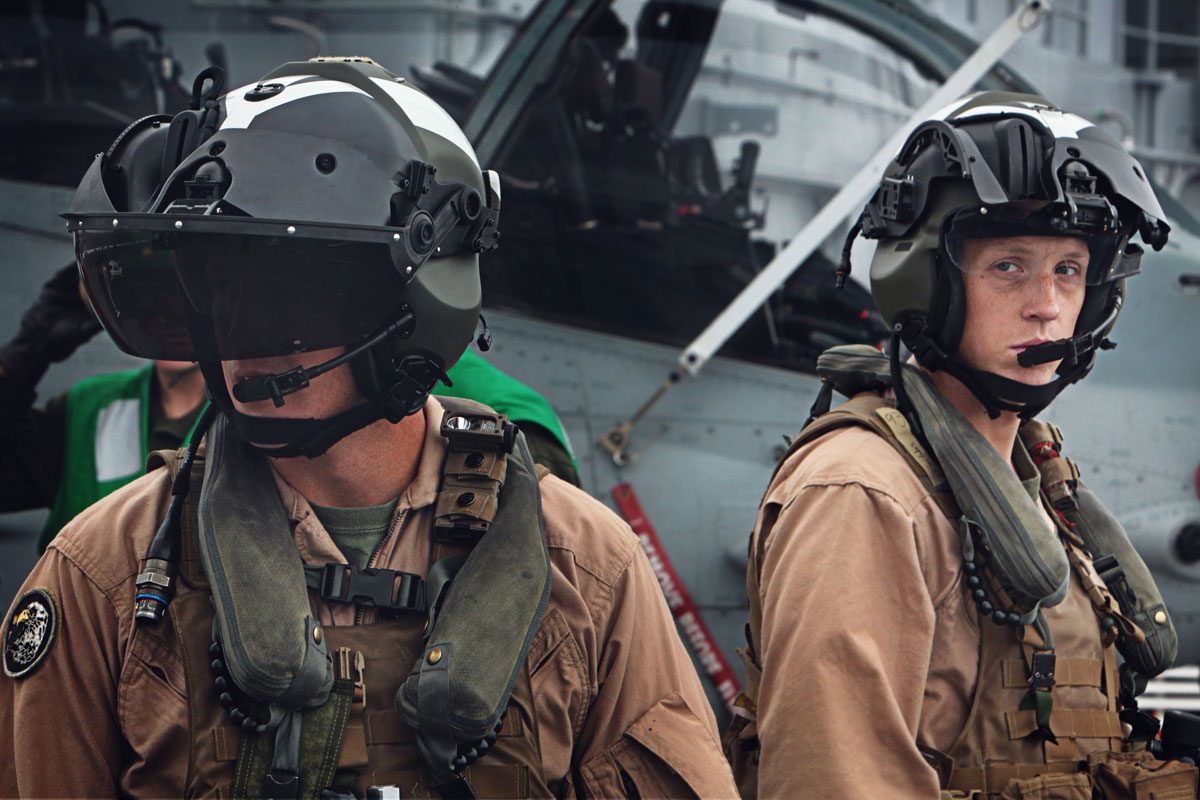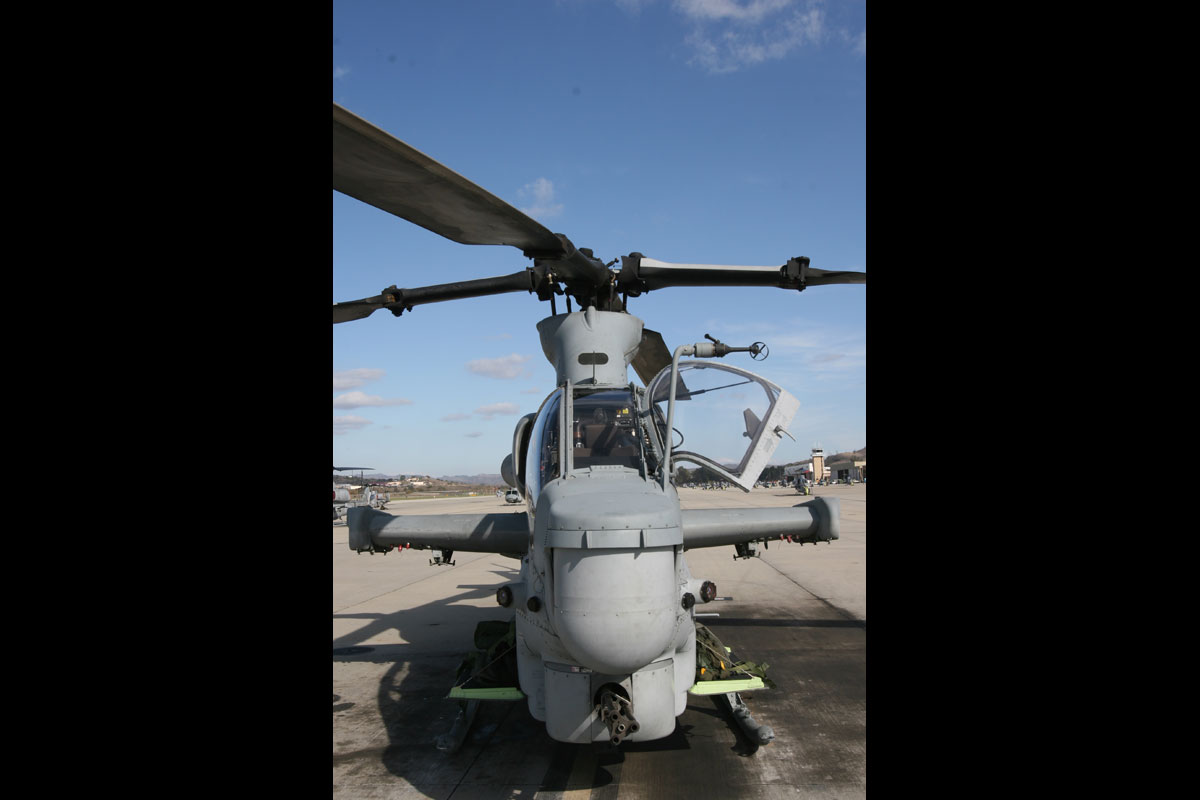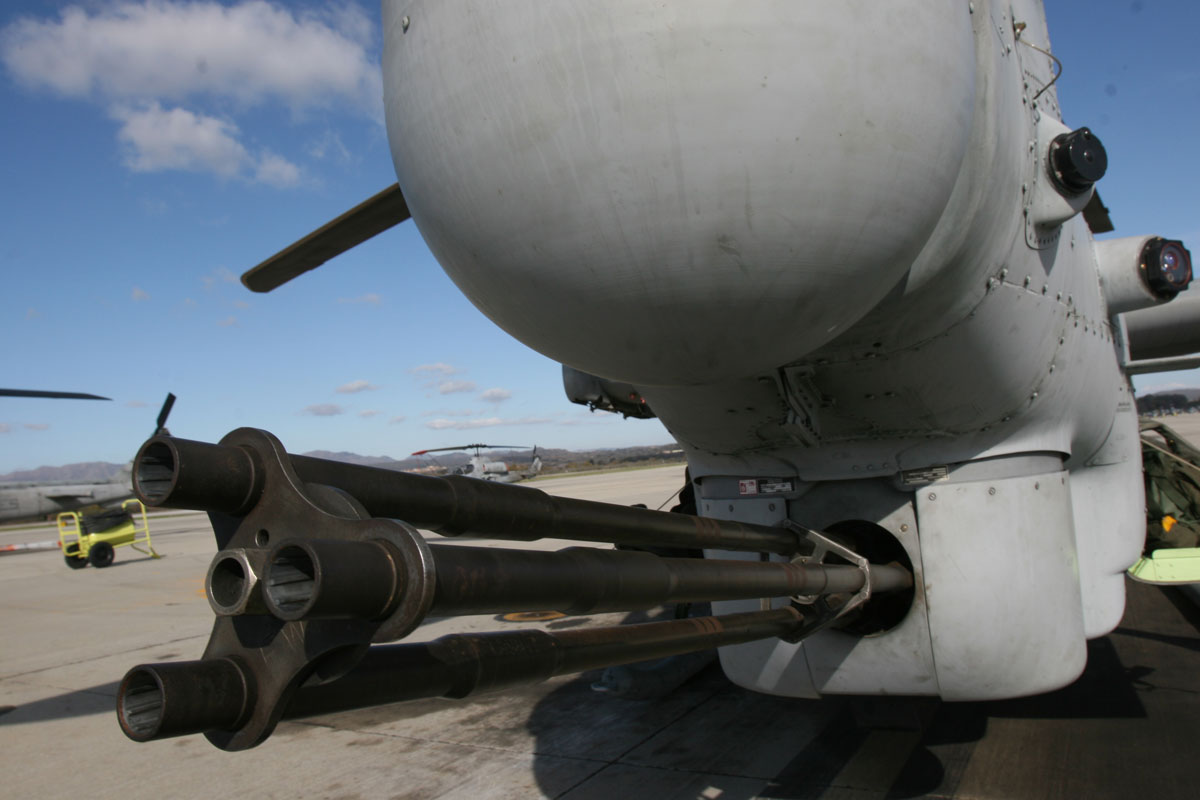Manufacturer: Bell Helicopter
Service: USMC Speed: 200 knots Range: 370 nm Crew: two -- Pilot and co-pilot/gunner Armament: 1 x 20 mm M197 3-barreled Gatling cannon; Hydra 70 or APKWS II rockets; AIM-9 Sidewinder; AGM-114 HellfireBased on the Vietnam War-era AH-1 Cobra, the AH-1Z Viper is the Marine Corps’ primary rotor-wing ground attack aircraft. The AH-1Z attack helicopter provides rotary wing close air support, anti-armor, armed escort, armed/visual reconnaissance and fire support coordination capabilities under day/night and adverse weather conditions.
The Corps is replacing the two-bladed AH-1W with the AH-1Z, which features a new, four-bladed composite rotor system, performance-matched transmission, four-bladed tail rotor, upgraded landing gear and a fully integrated glass cockpit.
The commonality gained between the AH-1Z and the UH-1Y (approximately 85 percent) is expected to significantly reduce life-cycle costs and the aircraft’s logistical footprint, while increasing the maintainability and deployability.
The crew are equipped with the Thales "Top Owl" helmet-mounted sight and display system. The Top Owl has a 24-hour day/night capability and a binocular display with a 40° field of view. Its visor projection provides forward looking infrared (FLIR) or video imagery. The AH-1Z has survivability equipment including the Hover Infrared Suppression System (HIRSS) to cover engine exhausts, countermeasure dispensers, radar warning, incoming/on-way missile warning and on-fuselage laser spot warning systems.
The Lockheed Martin target sight system (TSS) incorporates a third-generation FLIR sensor. The TSS provides target sighting in day, night or adverse weather conditions. The system has various view modes and can track with FLIR or by TV.
Able to project multiple missiles, rockets and 20mm cannon fire on targets otherwise inaccessible, the AH-1 has played a major role in every U.S. military conflict since Vietnam. Today it continues to provide the precision, armament and tactical situational awareness to fight in close proximity with our Marines below. Equipped with enhanced navigation displays that distinguish friends from enemies, data transfer systems that deliver real-time aerial reconnaissance to Marines on the ground and composite rotor blades and tail booms that can withstand 23mm cannon fire, the Marine AH-1 is the perfect example of why Marine Aviation has been called "flying artillery."
